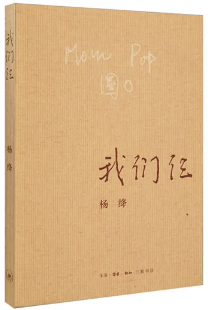如今,各种计算机辅助翻译工具、翻译耳机、翻译应用程序大行其道,让不懂外语的旅行者和商务工作者感受到了方便快捷的翻译服务。然而,计算机翻译会完全取代人工翻译吗?看看英国广播公司的报道怎么说。
You X Ventures/unsplashPut crottin de chèvre into Google Translate, and you'll be told it means goat dung.
在谷歌翻译中输入crottin de chevre,它会告诉你这个表达的意思是羊粪。
So if it appeared on a menu, you might pass. Alas, you would be ruling out a delicious cheese made of goat's milk that is often served as a starter in France.
所以如果这个词出现在菜单上,你可能会直接忽略。可惜的是,你也许会因此错过一道美食。在法国,这个词指的是用山羊奶做的美味奶酪,经常被当作开胃菜。
starter [ˈstɑːtə(r)]:n.第一道菜
Such misunderstandings are why Google admits that its free tool, used by about 500 million people, is not intended to replace human translators.
正是由于有这样的误译,谷歌承认这个大约有5亿人使用的免费工具并不打算取代人工翻译。
Tourists might accept a few misunderstandings because the technology is cheap and convenient. But when the stakes are higher, perhaps in business, law or medicine, these services often fall short.
游客可能会接受一些误译,因为这种技术廉价又便捷。但在商业、法律或医学等领域,当风险加大时,这些翻译服务往往达不到要求。
"Using Google Translate can lead to some serious errors, especially when words have multiple meanings, which is often the case in fields such as law or engineering," says Samantha Langley, a former lawyer who is now a court-approved French-to-English legal translator based in Meribel, France.
“使用谷歌翻译可能会导致一些严重的错误,尤其是当单词有多种含义时,法律或工程等领域常有这种情况,”在法国梅里贝尔工作的萨曼莎·兰利说。她曾是一名律师,现在是法院认可的法语-英语法律翻译。
That is not to say professional translators do not use computer assisted translation (CAT) tools. More sophisticated applications can help them take the donkey work out of repetitive translations.
这并不是说专业的翻译人员不使用计算机辅助翻译工具。一些更复杂的应用程序可以帮助他们从重复单调的翻译工作中解脱出来。
donkey work:艰苦单调而又无趣的工作
CATs are even used as part of modern language degree courses these days. So how good are they?
如今,现代语言学位课程甚至也在教授计算机辅助翻译工具的使用。那么它们的效果到底如何?
One of the most popular new tools is the so-called translation earpiece. Usually paired with a smartphone app, they pick up spoken foreign languages and translate them for the user.
其中一个最普遍使用的新工具就是是所谓的翻译耳机,通常通过智能手机应用程序操作。耳机会将听到的外语给用户翻译出来。
"It has taken decades of research to create a framework of algorithms designed to recognise patterns in the same way as the human brain - a neural network," says Andrew Ochoa, chief executive of US start-up Waverly Labs, which produces translation earpieces.
生产翻译耳机的美国初创企业韦弗利实验室的首席执行官安德鲁•奥乔亚说:“我们花了数十年的时间来研究,以创建一个算法框架,该框架旨在以与人类大脑(神经网络)相同的方式来识别模式。”
"Combining that with speech recognition technology has allowed us to make a huge leap forward in terms of accuracy."
“我们将其与语音识别技术相结合,大幅提升了准确性。”
There's no doubt that CAT tools have taken some of the hard grind out of text translations like instruction manuals or questionnaires, says Milan-based Paola Grassi, a professional translator for Wordbank, a global marketing and translation agency.
在米兰工作的保拉•格拉西是全球营销和翻译机构词汇库的专业翻译。她说,毫无疑问,计算机辅助翻译工具已经接手了一些文本翻译的繁琐工作,比如说明书或调查问卷的翻译。
"Survey contents are among the most repetitive ones and a good CAT tool can hugely speed up the process," she says.
“调查内容是最重复的内容之一,好的计算机辅助翻译工具可以极大地加快翻译过程,”她说。
For meetings and conferences, wearable translators like Waverly's are undoubtedly popular. But even this new generation tech, which combines speech recognition neural networks and internet-based translation engines, has limitations.
对于会议来说,像韦弗利实验室产品这样的可穿戴式翻译器无疑是很受欢迎的。但是,即使是这种结合了语音识别神经网络和基于互联网的翻译引擎的新一代技术,也有局限性。

新年伊始,听说有好多同学声称自己去年的读书li...

不知是不是因为今年疫情的缘故,总觉得时间过得...

2020年即将过去,本年度的【好书荐读】系列也迎...
